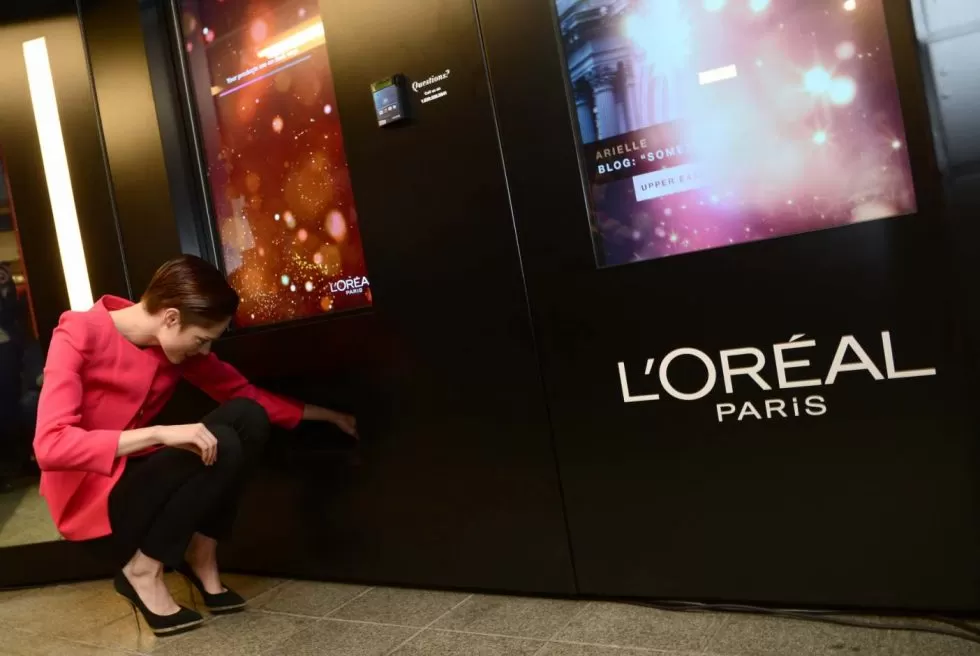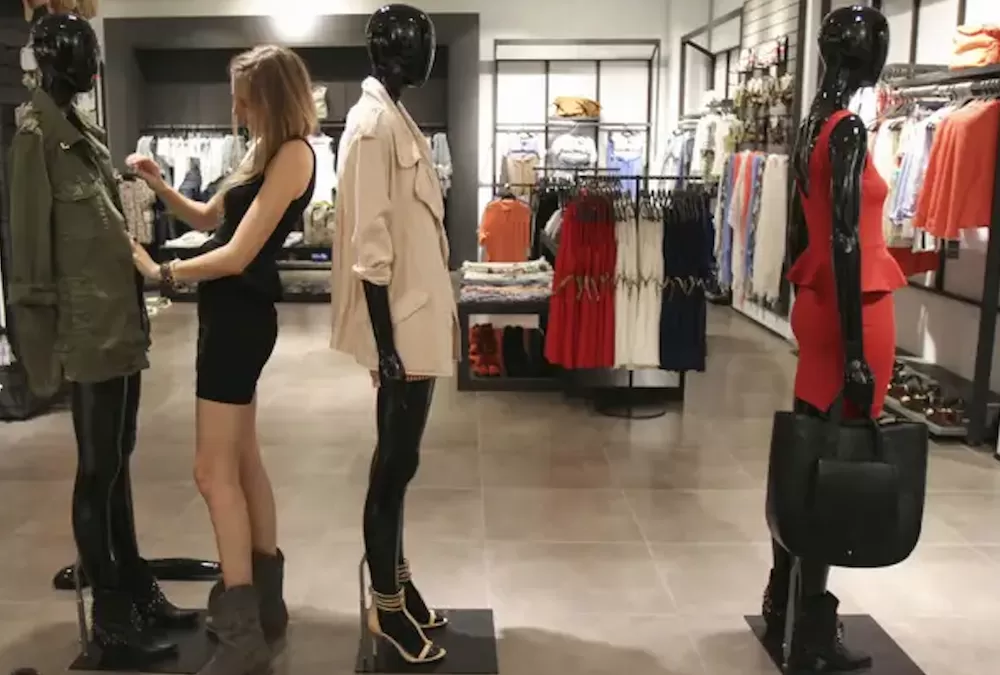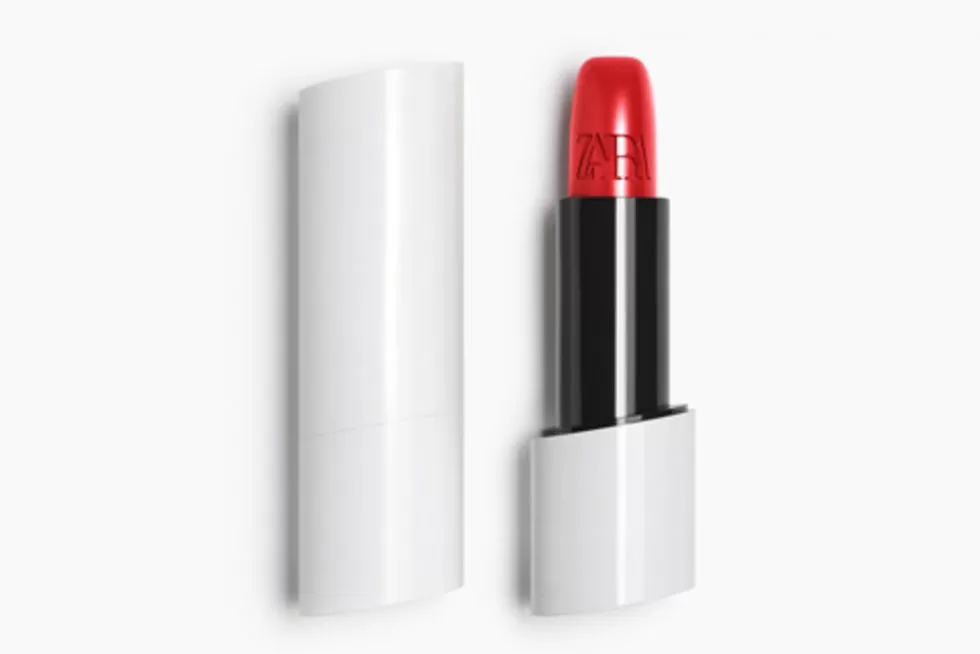Customer lifetime value (CLV or LTV) is one of the most important metrics you need to be tracking – and improving – to scale your brand over time. Unfortunately, it is also one of the most overlooked within ecommerce.
Before you start trying to figure out the net profit of each customer over the lifetime of their relationship with you, know that taking that route may be impractical. Instead, determining what each customer is worth over a specific payback period is perhaps a more straightforward and less caveated approach. Let’s look at how you can do that.
To calculate your CLV, you need to multiply your Average Order Value by your average purchase frequency rate to determine your customer value. Then multiply that value by your average customer lifespan, in this case, your calculated specific payback period.
Mathematically, CLV, = Average Order Value x Average Purchase Frequency Rate x Average Customer Lifespan.
Let’s break this down further.
Average Order Value: To get this value, divide your total revenue over some time, say one year, by your total number of orders in that same period.
Average Purchase Frequency: To get this value, divide your total number of purchases over some time by the number of unique customers who made purchases in that period.
Average Customer Lifespan: get this value by averaging the period a customer continues purchasing from your brand.
How to Determine Your Average Customer Lifespan
There is no one-size-fits-all rule for determining your average customer lifespan. This is relative to your business and your sales cycle. With historical data that allows you to view the average period between customer purchases and overall customer behaviour, you should know what period should be allocated to your lifetime value calculations.
However, for new businesses, with no historical data to turn to, there’s an acceptable ballpark of one to three years, with most marketers regarding anything beyond seven years as being too far in the future.
For example, you have an Average Order Value of $150 and an Average Purchase Frequency of twice every year. On top of that, you’ve analysed your customer behaviour data and found your average customer lifespan to be three years. Inserting all these values into the formula above would give you a CLV, of $900.
Now that you know how to calculate your CLV, next up is improving it. To scale your business, your CLV, must improve over time. While there are different ways to increase revenue, customer retention can play a key role in increasing your CLV.
Therefore the main question now is how do you increase customer retention? Let’s look at some key levers that can help you answer this question:
- Email Marketing: Automated flows
- SMS: Use SMS to re-engage with existing customers
Email is still a very useful form of communication and an effective tool when it comes to upselling your current customers and nurturing relationships over time. According to a DMA National Client Email Report, on average, every $1 spent on email marketing generates an average return of $38.
How many times have you checked your email in the past 24 hours? 5, 10, or 20?
Your customers are people like you and are doing the same. What this means is that if you aren’t already leveraging email marketing to extend customer lifespan, you’re missing out on revenue. Let’s look at how you take advantage of automated flows within email.
Email Marketing: Automated Flows
Automated flows are commonly defined as predefined email series that get triggered by some event or after an elapsed period.
For example, when a potential customer signs up for your newsletter, you’d want to engage them within an onboarding – or welcome – sequence of typically between 3 and 5 emails, all sent within the first 10 days or so. However, doing this manually every time you get a new subscriber is not feasible, especially if you get hundreds or thousands each day.
That’s where automated flows come in. Automated flows have a wide range of use cases that goes beyond welcome emails. For example, you can personalise different setups based on customer behaviour data.
For example:
- Welcome emails
- Abandoned cart emails
- Browse abandonment
- Post-purchase emails
- Customer re-engagement
Of the various email flows, the two that are perhaps most relevant to customer retention are post-purchase and customer re-engagement (also known as customer win-back). However these are not automated email, and the advent of predictive personalisation allows all retailers the opportunity to utilise this phenomenal software.
What if you could have a solution that was not dependent on attendance, or around-the-clock time-sensitive? What if you need not worry about holidays, sickness or maternity leave and implement something that is a 100% autonomous solution? What if it delivered more than your marketing and promotional emails too?
The calculations of overheads for email marketing are considerable, and just one or two people working full-time can be an enormous burden. How much do your staff cost you? Hyper-personalisation software comes in very distinct software versions.
It doesn’t preclude the retailers from using promotional and marketing ESP software, but it does allow a perpetual campaign of products that are most likely to be purchased by each consumer to be presented to them. Statistics from Statista and McKinsey detail the return from hyper-personalisation in email being 20x that of all the other marketing activity combined, making this a must-have for all retailers.
Welcome emails
Most beauty eCommerce brands use some form of welcome or onboarding sequence to drive familiarity and initial engagement. Depending on what your customers sign up for, your welcome emails can include your brand story, an idea of what to expect from future emails, and a formal introduction to some of your best-sellers. Let’s face it, the ultimate goal associated with sending a welcome email is to encourage that all-important first purchase.
Some brands include an incentive, such as a discount or gift on first purchases. How you approach this depends on what suits your brand. For example, ColourPop offers a one-off discount within the first email, when open rates are likely to be highest.
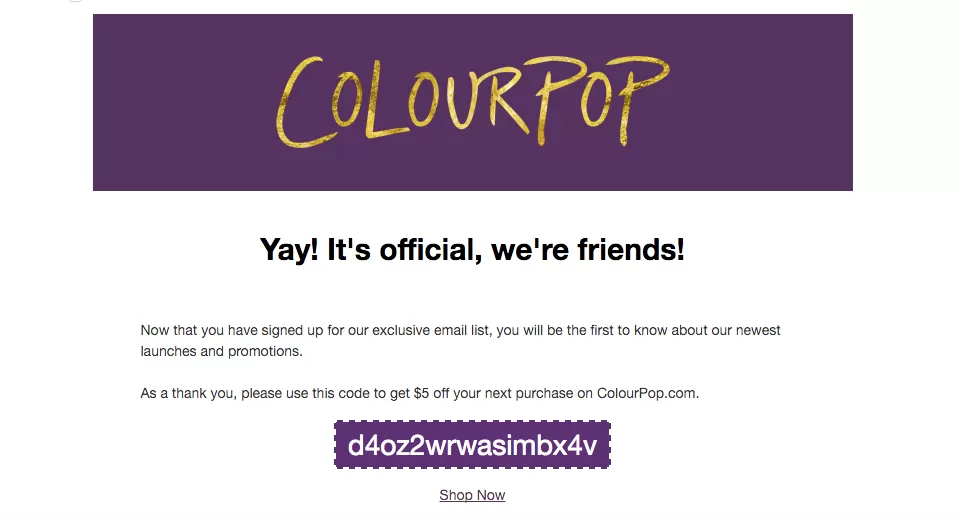
Typically, you might expect an open rate of between 40%-50% for your first email (higher if you’ve promised a discount code in return for signup), so it’s important to test subject lines and content.
Commonly used subject lines for a welcome sequence include:
- Here’s your {discount} from {brand} (instant gratification)
- Thanks for signing up (remind the prospective customer that they signed up)
- Welcome {name} (short and sweet)
- You’re in! (make them feel like they’re part of something exclusive)
Note that your welcome emails should include a singular, clear call to action to encourage your new subscribers to take the action you want them to take. For example, emails 1 and 2 may focus on a “Shop Now” message, email 3 might focus on your brand story (leading to your “about” or “mission” page, and email 4 may focus on getting them to engage across your social channels. Whether it’s following your Instagram page or placing an order for lipstick, you’ll need to signpost how subscribers can do just that, and more importantly, why.
Abandoned cart email automation flow
Most abandoned carts are a result of unexpected costs, such as shipping or taxes. Fortunately, with a perfectly timed automated email, you can introduce an additional touchpoint which may change your customers’ minds. By setting up abandoned cart email flows you can create a hyper-personalised email series that reminds the customer of the product they left behind, in a supportive tone.
There are different ways you can approach abandoned cart emails. Some of these include offering incentives, and educational content, like showing them how they can use the products in their cart.
Note that while offering incentives like discounts or coupon codes can bring back customers, you don’t want to create an impression that customers can get discounts by abandoning carts. A lot of brands do this, and it partially explains why cart abandonment is higher.
One brand that unlocks the power of abandoned cart automation flows is the makeup brand Too Faced. They dynamically incorporate products that were left in the cart and offer an aggressive 20 % off discount to help facilitate the first purchase.
Abandonment flows all require people to be on your list to retarget them after they abandon a particular action. The main abandonment flows are:
- Browse abandonment (viewed specific products on your site, but took no further action)
- Cart abandonment (added products to the cart, but did not purchase)
- Checkout abandonment (started the checkout process, but didn’t finish)
With the three main types in mind, it makes sense to offer an aggressive discount if they’ve added multiple items to the cart, or if they’ve abandoned the checkout process. In other circumstances, you might be better off sending a reminder email, signposting how they can resume their purchase journeys.
Order confirmation & post-purchase email flows
The best way to boost customer retention is by building trust. You don’t want your customers experiencing anxiety after placing an order, and that’s where your confirmation email comes in.
Earlier, we mentioned welcome emails as a standard in the eCommerce industry, and confirmation emails and shipping notifications are other examples of automated flows that have become a standard. Let your customers know that you are with them all the way, from when they order to when their products reach their doorstep.
Your post-purchase flow represents a chance to strengthen the relationship between you and your customers. The overall objective of your post-purchase emails is to inform when customers can expect to get their products but also to take valuable actions, such as buying complementary products, leaving a review, or completing a survey.
Again, a 3 to 5-step sequence here can help to extend customer lifetime value, so don’t miss this opportunity to re-engage when it matters most.
Customer re-engagement flows
A winback (or reactivation) flow is a series of emails sent to customers who previously engaged with you, but who haven’t engaged with you for a while.
Shopify may also label these customers “At-Risk” based on previous purchase habits.
As the name suggests, the objective here is to persuade this segment to purchase again, to extend their CLV.
Rather than try to re-engage customers with a generic discount, beauty subscription brand Birchbox offers a free product into the mix, which is likely to resonate well with make-up aficionados. Going down this road, they demonstrate they understand their audience better than most and offer something tangible the customer can touch and feel.
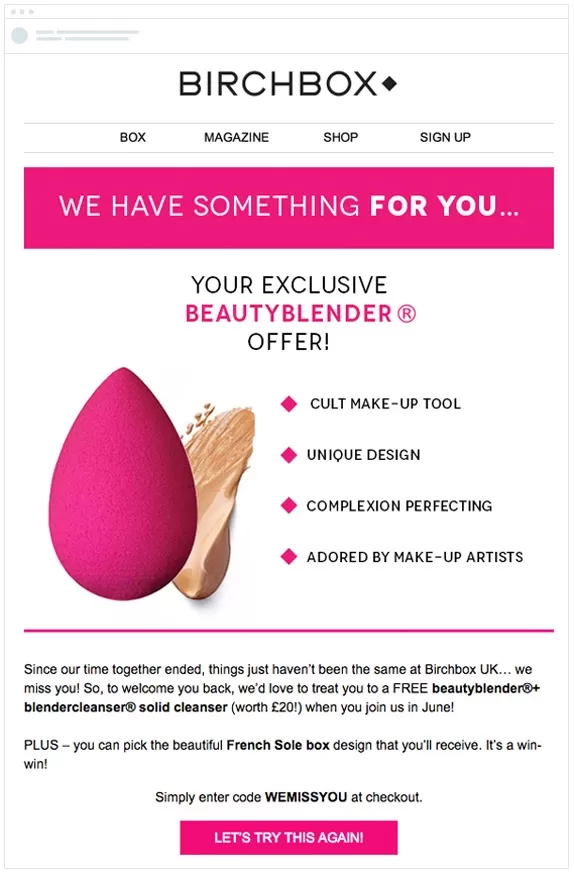
Feedback emails, like the one below from Anthropologie, can be a useful way of re-engaging with lapsed customers – to either reactivate them or simply get their feedback to better understand the reasons why they haven’t purchased in a while.
This can help to refine all areas of your customer journey, from your on-site experience to the emails you send, and customer service. Anthropologie recognises that people are more likely to take the time to fill out a feedback survey if offered an incentive, in this case, a 20% discount code.
Why hyper-personalisation matters
The above elements have all been stalwart necessities for marketing for the last 20 years, but it became apparent over recent years that AI machine learning hyper-personalisation smashes all other results to smithereens. If you offer customers what they want every time, and exactly when they want it the effect is enormous, and we are talking 20x (twenty times) the returns standard ESP software can offer.
Not as segmenting product selections as many would have you believe, because this is not personal and unique to the individual consumer, but rather exactly their shade of blusher, or appropriate skin-tone products that make that consumer feel you have gone above and beyond in your hyper-personalised offerings to them. This is true personalisation. Accordingly, they return that care with their loyalty to CLV, and importantly their custom AOV.
Summary
When trying to optimise your digital presence, the first thing to think about is how to get yourself in front of the right customers. Once you’re driving the right kind of traffic, you’ll want to optimise your conversion methods, and your choice of creative plays a big part here. This is an important stage as it directly affects your bottom line.
Examine your customers’ shopping behaviour so you can be present at the main touchpoints.
Invest in social media marketing, as influencers and third-party reviews are two key sources of information for “in-market” beauty shoppers.
From an on-site conversion perspective, make sure your website is mobile responsive, optimise website speed, improve site search, and include product recommendations to help users find products according to their needs.
Once you’ve acquired your customers, don’t simply forget about them. Extend customer Lifetime Value, using the power of email marketing and SMS. Numerous opportunities exist, specifically around automated flows, which adopt behavioural trigger points to target customers across critical phases of the customer lifecycle journey.
With so much to consider, to thrive in beauty and cosmetics ecommerce you must attack the challenge of growth with the right tools and technical know-how. Hopefully, this guide de-mystifies some of the core levers of growth and provides a roadmap to successful execution.



